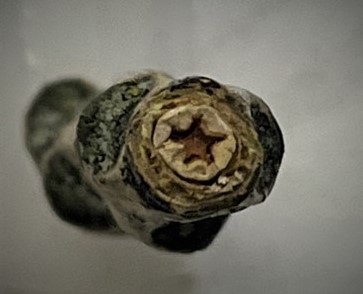I learned about the star shape inside cottonwood twigs from a Lakota story. The stars were not always in the sky. They originated in the earth, seeking roots from which they could be born. The sound of water drew them to the cottonwood roots (since this tree often thrives near water). They traveled upward into the trees, waiting for wind to snap the branches, releasing the stars into the sky. The story made me wonder if other trees have this star shape inside their twigs and branches, and what purpose does the star pattern inside the twigs serve (other than cosmological)?

In exploring winter twig keys and a story by Deb Mowry of the Montana Natural History Center, I learned that this five-pointed (also called five-angled) star shape is common in Populus (aspen, poplar, cottonwood) and Salix species (members of the willow family) but is also found in oaks (Quercus), and chestnut (Castanea). The pith inside a stem is made of parenchyma (large, thin-walled cells), which are often a different color than surrounding wood (xylem). The pith’s function is to transport and store nutrients. Pith is usually lighter when new, but darkens with time (as seen in images like these of cottonwood “stars”).
Mowry’s story notes the importance of cottonwood to the belief systems of Native American tribes: the Lakota, the Cheyenne, the Arapaho, and the Oglala Sioux. Pacific Northwest naturalist and poet Robert Michael Pyle’s essay, “The Plains Cottonwood” (American Horticulturist, August 1993, pp.39-42), describes an Arapaho version of the story of the stars that you told above: “They moved up through the roots and trunks of the cottonwoods to wait near the sky at the ends of the high branches. When the night spirit desired more stars, he asked the wind spirit to provide them. She then grew from a whisper to a gale. Many cottonwood twigs would break off, and each time they broke, they released stars from their nodes.” Cottonwood twigs sometimes snap off without the assistance of wind, a self-pruning phenomenon called cladoptosis. Pyle suggests looking for twigs that are neither too young nor too weathered if you want to observe the clearest stars: “The star is the darker heartwood contrasting with the paler sapwood and new growth.”